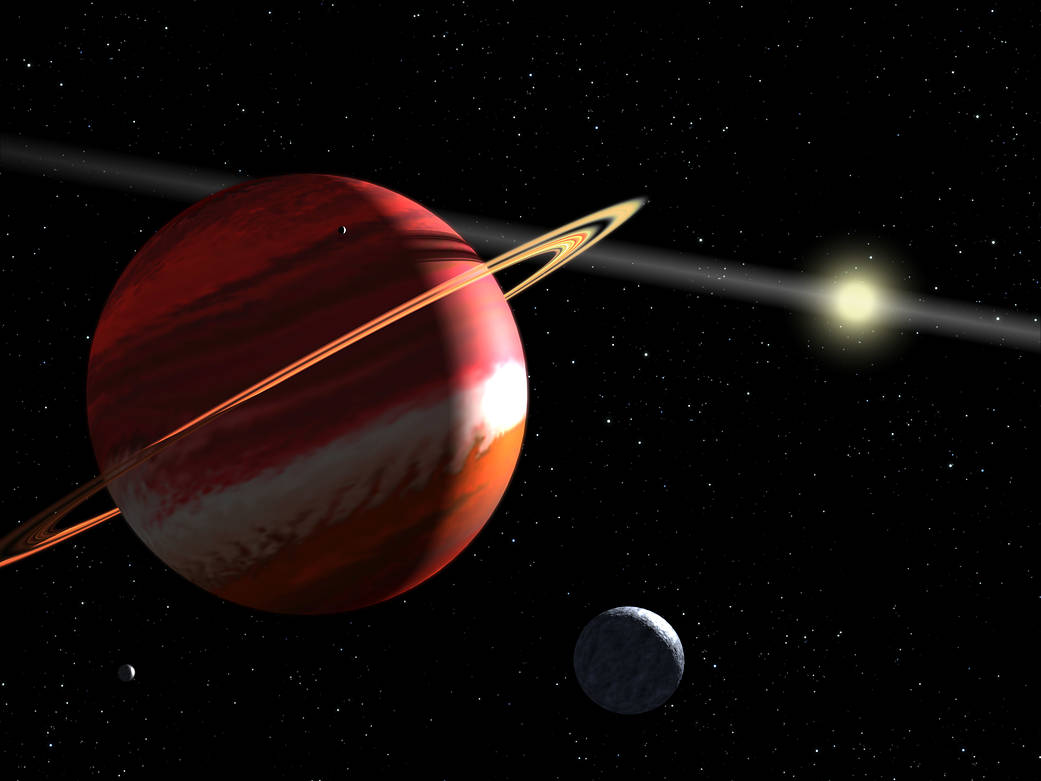This artist’s concept is of a Jupiter-mass planet orbiting the nearby star Epsilon Eridani. Located 10.5 light-years away, it was the closest known exoplanet to our solar system when it was discovered in 2007. The planet is in an elliptical orbit that carries it as close to the star as Earth is from the Sun, and as far from the star as Jupiter is from the Sun.
Epsilon Eridandi is a young star, only 800 million years old. It is still surrounded by a disk of dust that extends 20 billion miles from the star. The disk appears as a linear sheet of reflecting dust in this view because it is seen edge-on from the planet’s orbit, which is in the same plane as the dust disk.
The planet’s rings and satellites are purely hypothetical in this view, but plausible. As a gas giant, the planet is uninhabitable for life as we know it. However, any moons might have conditions suitable for life.
Astronomers determined the planet’s mass and orbital tilt in 2006 by using Hubble to measure the unseen planet’s gravitational pull on the star as it slowly moved across the sky. Evidence for the planet first appeared in 2000 when astronomers measured a telltale wobble in the star.
Image Credit: NASA, ESA, and G. Bacon (STScI)
这幅艺术家的概念画的是一颗木星质量的行星,围绕着附近的恒星Epsilon Eridani旋转。它距离我们10.5光年,2007年被发现时是已知的离太阳系最近的系外行星。这颗行星在椭圆轨道上运行,它与恒星最近的距离就像地球与太阳的距离一样近,与恒星最远的距离就像木星与太阳的距离一样远。
Epsilon Eridandi是一颗年轻的恒星,只有8亿年的历史。它仍然被从恒星延伸到200亿英里外的尘埃盘包围着。在这个视图中,尘埃盘呈现为反射尘埃的线性薄片,因为从行星的轨道上可以看到它与尘埃圆盘在同一平面上。
从这个角度来看,这颗行星的星环和卫星纯属假想,但似乎是可信的。作为一颗巨大的气体行星,据我们所知,这颗行星不适合生命生存。然而,任何卫星都可能有适合生命存在的条件。
2006年,天文学家利用哈勃望远镜测量了这颗看不见的行星在恒星缓慢移动时对恒星的引力,从而确定了这颗行星的质量和轨道倾角。关于这颗行星的证据首次出现在2000年,当时天文学家测量到这颗恒星有明显的摆动。
影响来源:NASA, ESA, and G. Bacon (STScI)







